Latest
Uploaded by Scottish National Party (SNP) on 2016-04-17.
Uploaded by Scottish National Party (SNP) on 2016-04-13.

Despite being a sectoral campaign, research by Heriot Watt University found that 30.8% of pro-independence campaigners were active in National Collective's campaign during Scotland's Referendum.
From a £7 billion Tory cut to ensuring that Scotland isn’t a pound or even a penny worse off. More powers and a fair deal for Scotland.

On Saturday night my 86 year old Grandpa was rushed into hospital for the first time in his life with acute stomach pains. After major surgery he was taken into intensive care in a critical condition and we were told to be realistic about our expectations.
24 hours later I received a message from my Mum to say that he had woken up and was off his life support machine. The following is a sample of the conversation I had with him when I arrived at the hospital...
R: *Holding his hand* Grandpa, you don't know how happy I am to see you're awake. How are you feeling?
G: You're not getting rid of me that easily.
R: I told you yesterday that I wanted to see you awake today, and look, you are!
G: I must have heard you... Your hands are really warm. Do you have a temperature? You sure you don't want to grab a bed? You could stick your feet up. Relax.
G: *points at my Mum*
G: You've been here twice today. You should get a bed too. It's comfy here.
G: Do you know the food in here is free?
R: No, but I must try it sometime.
R: Granny said you've to avoid tap dancing as you might wake up the other patients.
G: *laughs*
R: Do you know you've had an operation?
G: I've had an operation? Where?
R: *explains*
G: Those surgeons are quick. I didn't notice.
G: Oh wait, he did say that he had given me a 10 year guarantee.
R: Is there a message you want me to give to Granny?
G: Kiss, kiss, kiss and tell her to not sleep on my side of the bed.
R: She misses you, you know?
G: She's always had odd tastes. I miss her too.
R: All our friends and family, and even Nicola and Peter, have said to send you their best wishes.
G: Tell her she's already got my vote. But that's nice of everyone. Tell them I say hello and thanks for their wishes.
J: Are you being fed through that tube?
G: Yes, I'm on the SlimFast diet.
G: What day is it?
R: Monday.
G: It's not Sunday? I've not had a missing day since 1951.
R: *laughs*
R: You need to focus on getting better we want you planting flowers in your garden in Spring.
G: That would be nice. I'll try my best.
I wanted to share this for some of the people that know him as it's a happy story in what has been a horrific few days. He's still very weak and has a long way to go but he's heading in the right direction.
Despite all SNP MPs voting against air strikes on Syria, the House of Commons has agreed to back the UK Government’s call for military action.
The SNP believes that the UK should not repeat the mistakes of the past, and engage in military action without a comprehensive and credible plan to win the peace.

Over 100,000 people signed the 'Don't bomb Syria' petition.
Scotland’s Referendum energised politics in Scotland, leaving a legacy of increased political engagement with tens of thousands of people, from all walks of life, joining the SNP. Then, during the General Election of 2015, we asked you to vote for the SNP for a strong voice at Westminster, and you did.
When Nicola Sturgeon became First Minister, she vowed to create the most open and accessible Government Scotland has ever had. Embracing social media we’ve organised live Q&A sessions on Facebook, Twitter and in communities across Scotland. But we want to build on this work even further.
The internet and new technologies enable activists to be informed, organised and to collaborate with like-minded people in ways like never before. And so, to support your activism, we’ve created a new SNP website and campaigning platform.

So how does it work?
We want to continue to build a fairer and more prosperous Scotland. In the our vision section of our website we outline our desire for a fairer Scotland and our vision for education, health, the environment, economy and the constitution. We want to live in a Scotland that is more prosperous; where the NHS remains a publicly funded service, free at the point of use and where every child has the chance to succeed.
You can stay informed by checking out our latest updates. Click on the ‘Your SNP’ tab for tailored content based on your ‘Interests’ and the ‘Groups’ that you have joined.
The Policy Base provides a searchable archive of party policies. And Frequently Asked Questions. Here you will find our most commonly asked questions about membership and our website.
There are now two ways that you can sign up to the SNP. Register your support means you will receive our latest updates. Becoming a member enables you to influence party policy and attend branch meetings. You could even volunteer to help.
The events section of our website enables members to organise events that supporters, members and the wider public can attend, such as street stalls, coffee mornings or social events.
By joining Groups you can connect with like-minded people across Scotland and receive updates and information about events that interest you:
You can find out more about our party, including information about your elected representatives and your local branch. And you can donate and buy SNP goodies to help support our work.
The future of our party is defined by the extent to which you want to get involved.
So what are you waiting for?
Make your voice heard.
Help us to build a better Scotland by joining us at snp.org/joinus

This interview is a follow up to my Sunday Herald 'Referendum Special Edition' article on September 14th 2014. It was written for the Sunday Herald 'Referendum Anniversary Edition' on Sunday 13th September 2015.
Could you fill in a bit of background on how the National Collective came about and what its aims were?
In 2011 the Scottish National Party had just secured a landslide victory and they had a mandate to deliver a referendum on Scottish independence within five years. At this time, support for the proposition was at around 25% and it was clear that something special would be required if the Yes movement was to succeed against the No campaign.
Artists have often been at the vanguard of social change that defined new paradigms of thinking for society in the twentieth century, and in twenty-first century Scotland it is no different. In December of that year I met up with friends Euan Campbell and Andrew Redmond Barr in Edinburgh to discuss an idea that I’d had to create a platform for a collective of artists, writers and activists campaigning for a Yes vote.
After agreeing to create the group we bounced some ideas off each other and came up with the name ‘National Collective’. We decided we would campaign with the mission statement of ‘Imagining a better Scotland’. Our aims were simple; we hoped to inspire, inform and engage people from all walks of life. To achieve this, we utilised social media to put unheard and disenfranchised voices front and centre of our campaign, at a time when much of the mainstream media and fledgling alternative media outlets tended to publish regular established voices. We ran inclusive engagement projects that made politics accessible for all. And we organised creative political events in communities across Scotland that brought a new audience to the Yes movement.
What were the achievements of National Collective? As a founder, did you ever think it would grow to have such prominence?
Although the Yes movement didn’t achieve its primary goal of Scottish independence, we made substantial progress against all of the odds. It’s not really for me to say what our achievements were, but National Collective has been credited with contributing towards the referendum’s legacy of high levels of political engagement and creating innovative forms of political campaigning.
When we launched National Collective we had no idea that it would grow to have such prominence. Where I think we succeeded was by offering a form of participation in politics that was accessible to all. We didn’t seek permission to organise, we simply identified exactly where the Yes movement needed support and responded.
On a personal level, what were the highlights of the referendum? And the low moments?
What inspired me the most during the referendum was witnessing normal people doing extraordinary things, the many activists and groups across Scotland who contributed their time voluntarily for a cause they believed in, the random acts of kindness, generosity and camaraderie, and finding out about people’s hopes and dreams for a better and fairer Scotland; whether they be written on a wish tree tag or performed through spoken word.
Online and social media activism flourished and it has become a case study for how social movements can utilise the medium to hold power to account. Hashtags such as #DonorGate, #500Questions, #IndyRefsky, #PatronisingBTLady and #YesBecause injected humour, wit and energy into the debate. What became clear to me is that the potential for digital in future political campaigns is vast, its reach is only limited by a our ability to use it.
I’d say my lowest moment was our referendum results night at National Collective’s subterranean HQ in Leith. I’d sensed a retraction of support from some of the softer former No voters after the barrage of hostile rolling news coverage. Our gathering of largely younger activists started in good spirits, however as the results came in the mood became much more sombre. Having been inspired by their dedication and bravery during the referendum it was heartbreaking to watch.
Could you explain a bit about why the decision was taken to end National Collective? Could it ever re-emerge if there was another referendum and are you hopeful another referendum will happen?
The decision for National Collective to cease activities came about because the organisers felt that the moment had passed. The referendum had been a mighty adventure and it is a period that I will never forget. I have absolutely no doubt that individually our members will continue to make their mark by using their skills and experience to help shape Scotland in their own way.
I do think there will be another referendum. Unless something dramatically changes at Westminster it looks like there will be another Tory government in 2020. I’d imagine that questions over our membership of the EU and the potential for indefinite Tory rule might sharpen the focus on Scotland’s future somewhat. However, I would stress that the Yes movement must learn from the past and work constructively towards the future. The time for building a better Scotland is now. I see my role at the SNP as one way of helping to facilitate that. I think that the energy that inspired the referendum can be used to transform Scotland in the years ahead.
Would National Collective re-emerge if there was another referendum? Well, can you imagine another referendum without National Collective?
Could you explain a bit about your involvement in politics and the SNP since?
A couple of days following the referendum I took a bus up to Ullapool. I had no idea what my next steps were going to be as I was technically unemployed. I just needed some space to reflect on the result and the last 3 years.
Like many other people during this period, I made sacrifices so that I could dedicate enough time to campaign. And as National Collective rapidly grew in prominence and size, it began to take over my life. In my case the sacrifice I had to make was my social life and my small graphic design business, which I’d built up over 3 years. Every penny I had left and every hour of my time was dedicated to directing our campaign during 2014. It wasn’t easy as we didn’t have the vast war chest of the Better Together campaign.
On my return from Ullapool, I wrote a statement with another member of National Collective in a cafe titled, ‘How we won and how we will win’. It was a cathartic piece designed to highlight the successes of the Yes movement against the full might of the No campaign. The idea was that it would restore the hope that was so valuable to our movement. It seemed to resonate with many Yes voters as it was shared over 28,000 times on social media and read by over 200,000 people. It was around that time that the SNP’s membership was increasing dramatically.
Shortly after I received an email from Shirley-Anne Somerville, Deputy Chief Executive of the SNP, asking me to meet her for a coffee, so I did. We talked about some of the incredible moments we’d witnessed during the campaign and eventually we got onto the subject of my future plans. If I’m honest, it started with me saying that I didn’t have any.
The following day she dropped me an email to ask if I would consider working for the SNP. As a graduate of Visual Communication at Edinburgh College of Art I had never previously considered working in politics. After thinking about it for a couple of weeks, I accepted the offer as I saw it as the best way to use my campaign experience, build on my work for the Yes movement and encourage further political engagement.
Working behind the scenes at a political party means that you get to see first hand how hard all staff work, alongside grassroots activists and politicians, to help produce electoral success. I’ve been massively impressed by the relatively small team at SNP HQ and their openness to new ideas.
My role can be quite varied, it can range from political engagement and digital campaign strategy, to helping to organise events, such as the SNP’s sold out extravaganza at the Hydro. It really depends on what is needed at any given time. General Election 2015 was a fantastic experience and it’s been refreshing to have some time over the summer to prepare for the Scottish Parliamentary Election 2016.
When Nicola Sturgeon became leader of the SNP she vowed to be the most accessible First Minister ever. We've been helping to make this happen through events and our use of digital.
I enjoy working with digital as it’s an unfiltered platform that enables you to have two way communication with party members, supporters and the wider public. A good example of the way that digital has changed how political parties now operate was when the Telegraph’s #FrenchGate story broke. When it happened I was relaxing on a Friday night in a pub in Leith with friends. Although it was clearly untrue, we realised that it had the potential to be a damaging story if it were to gain traction in the UK media. Alongside one of my colleagues, we created a Storify, assisted by the First Minister’s tweeted rebuttal and by tweets by journalists who had contacted the French Consul to find out what had actually happened. It was read by over 62,000 people within 8 hours and the story was completely discredited by the morning. The hunt for the person who had leaked the story then begun.
Aside from meeting the day-to-day demands of a political party, I see digital as a fundamental platform for encouraging greater participation in politics and providing accessible and accountable governance.

An extract from Iain Macwhirter's latest book Tsunami: Scotland’s Democratic Revolution.
It seemed that a class divide had begun to emerge in what had loosely been called the continuing ‘Yes Alliance’, the various non-SNP groups that had campaigned for independence in the referendum. The reference to an ‘art school clique’ related to criticism that National Collective, the acclaimed arts-based #IndyRef initiative, tended to exclude working class people.
Co-founded by the graphic designer Ross Colquhoun in 2012, the National Collective had mobilised some 4,000 writers, artists, poets, and designers, and organised a series of festivals, including a Yestival, of music, poetry and comedy which lent much-needed colour and energy to the Yes campaign. However, some in the wider independence movement felt that its art was rather conservative, inward-looking, and middle class. As McAlpine himself put it: ‘[working class supporters of Hope over Fear] don’t really do wish trees and coffee mornings and performance poetry and deliberative conferences.’
The rapper Loki, real name Darren McGarvey, inspired a vivid debate on the Nationalist left when he posted a series of video blogs in March 2015 saying that he and working class artists felt excluded from National Collective. In one memorable rant worthy of Malcolm Tucker, he said that National Collective existed only to ‘suck Ross Colquhoun’s big rugby cock’. He later apologised for that remark. For their part, National Collective insisted that there had been no attempt to exclude anybody from the organisation. In fact, they say that they discussed a funding project with him to engage young working class people. The whole point of National Collective was that anyone could participate and there was no attempt to curate any of the material it published or staged.
More seriously, however, Loki also criticised National Collective for being too close to government after it emerged in March 2015 that Ross Colquhoun had joined the SNP payroll as an ‘engagement strategist’. ‘His appointment by Scotland’s ruling party,’ said Loki, ‘is sure to raise questions regarding National Collective’s authenticity as the artistic voice of the Yes movement.’ Loki was joined in the assault on National Collective’s integrity by the Yes-supporting journalist Andrew Eaton Lewis, the former Arts Editor of the Scotsman. While he paid tribute to its member’s creative work and energy, he criticised the Collective for lacking any kind of internal accountability, membership rights, or constitution. It had, he said, a ‘democratic deficit’.
The truth is National Collective was never a democracy. It was an association of like-minded individuals who came together in an ad hoc way to try to inject some colour into the Yes Scotland campaign, which was, by common agreement, too preoccupied with dry statistics and abstract arguments about currency. Initially the Collective was arguably more like a writing group than a political or arts organisation. But the initiative simply struck the right note at the right time, gathered hundreds of volunteers, and unleashed a huge amount of anarchic creative energy. True, it wasn’t Turner Prize stuff, but they weren’t interested in selling to the arts market or being placed in galleries.
National Collective’s relationship to the SNP was always close since a number of founder members were SNP supporters, but it kept the other organisations, including Yes Scotland, very much at arm's length. It is unfair on the artists, musicians, comedians, writers, fashion designers, and others who gave their time for free to the Yestivals and other events to complain that it was a nationalist front. It wasn’t. Political parties simply aren’t capable of having that much fun for a start. There was perhaps an element of naiveté in believing that the Collective could continue as a free-form, come-as-you-are ‘happening’ when it started raising significant sums of money and had become a national movement. But it never pretended to be a political party. As Christopher Silver, one of National Collective’s prominent members put it on Twitter: ‘The lesson I took from #IndyRef is that it’s better to start your own revolution than wait around for one with an AGM.’
The debate raging in Bella Caledonia soon attracted the attention of political journalists from the mainstream press. Many had never rated National Collective and had been waiting for an opportunity to have a go at it: ‘I don’t care whether National Collective are democrats,’ wrote the Spectator columnist Alex Massie in the Scotsman, ‘I’d just prefer them to be artists.’ He quoted sections of bad poetry that had been published on the website. He might equally have quoted the celebrated Scottish poet Liz Lochhead or the Booker prize-winning novelist James Kelman who contributed to the hardback almanac Inspired by Independence. Or one of Scotland’s leading playwrights, David Greig, who said that National Collective had brought inspiration to the independence debate.
But for my money the success of National Collective had nothing to do with the arts-world names that it attracted. Any campaign can do that. It wasn’t trying to appeal to the arts establishment or bid for Arts Council grants. What was endearing and new about National Collective was the involvement of unimportant people who were invited to contribute their poetry, thoughts, art, photography, humour, knitting, or whatever, without being subjected to withering criticism. National Collective set itself the task of ‘imagining a better Scotland’, and even the much-derided wish trees did exactly that.
Unfortunately the scorn, accusations of class bias, and political selling out seemed to undermine the confidence of those still involved in the Collective in late 2014/15. It was always on shifting sands based on voluntary effort and changing personnel. Despite its communication skills it seemed to lack the will to mount an effective defence of its work in political or artistic terms, even though its success was never in doubt. It is one of those occasions when some old media PR might have helped. Perhaps even a press conference to address some of the political accusations formally. But it didn’t happen, and within a month, National Collective effectively shut up shop.
The criticism that it was a clique of middle class 'luvvies' was probably the killing blow. Middle-class radicals in Scotland tend to be insecure of their class background. There is no obvious reason for this sensitivity since revolutionaries from Karl Marx to Nelson Mandela have invariably emerged from the middle classes. It’s what you say that matters, not where you come from. But in Scotland there is a degree of class hostility that can be very difficult to manage if you are on the sharp end of it. The dark side of Scotland’s literary strand of proletarian romanticism is a cultural animosity toward people who didn’t grow up on housing estates. Or who don’t sound as if they do. The final irony of the National Collective class row is that Ross Colquhoun was brought up in a single parent household in Edinburgh’s Drylaw estate.
On May 1st 2015, a statement on National Collective laid the movement to rest. ‘To be part of it was exciting, energising, inspiring and beautiful. National Collective belongs to a time and a place and that moment has passed.’ If the implication there was that National Collective had always been time-limited, that wasn’t entirely true. It had never been the Collective’s intention to liquidate itself after the referendum and initially it had ambitious plans to become a permanent non-aligned arts-based organisation. Aware that it had been too urban and lowland-centred, the organisers had planned to develop its network of local groups across Scotland and publish a series of arts-based journals in each of these areas. It sent out questionnaires to its 4,000 odd members and was seeking crowdfunding for this purpose. But, as the controversy surrounding the organisation mounted, these ideas faded. The energy had drained out of the Collective and an organisation that had been built on nothing had to eventually recognise that it had no visible means of support. It is worth however considering its last will and testament:
"National Collective offered a form of participation in politics that was thoroughly imaginative, but also accessible to all. National Collective tapped into the consciousness of a generation for whom the restrictions of ideological and party loyalties can often seem stifling and archaic. National Collective’s central aim, to ‘imagine a better Scotland’, remains just as relevant now that the referendum campaign is over. Its early success was just one example of a wider upsurge in grassroots activity in support of Scottish independence.
However the group was also tapping another seam, namely, the rise of what has been described as the ‘precariat’. The young, often highly educated post-industrial workforce that has become an ever more significant feature of neoliberal economies everywhere. National Collective is what a political campaign looks like when it is instigated and sustained by such people."
That was a remarkable statement in many ways, both in its maturity and its political wisdom. It was fully aware of its limitations but also confident about its strengths. Of course, it was unreasonable to expect young people with careers to build to give endlessly of their time for nothing. It probably couldn’t have continued without proper funding and some kind of permanent secretariat. And there is much good work continuing by people involved in the venture. Nevertheless, when National Collective was extinguished, a light went out in the independence movement. I wasn’t involved in National Collective in any way and hope someone who was closer than I was to National Collective writes a proper assessment of its achievements. If Scotland is in the middle of a democratic revolution, then National Collective deserves a lot more than a footnote.
The demise of National Collective seemed to epitomise the failure of the continuing Yes movement or alliance to find a collective way forward in the post-referendum era. In place of the infectious enthusiasm and optimism of the referendum, there was now an element of division, rancour, and disillusion.
Perhaps this is just what always happens to radical movements. Yet it was a strange moment for cultural defeatism. The day National Collective folded the opinion polls were indicating that the SNP was on course to win every seat in Scotland. That, you might think, was an eloquent rebuff to Alex Massie who had said that National Collective’s radicalism was about ‘as subversive as a flat white in Finnieston’. Finnieston is in Glasgow which was the prime focus of the nationalist electoral revolution on May 7th 2015. History may judge that the ‘hipster unco guid’ as he called them, played a not insignificant role in turning the young people of that city to the SNP.
--
Artwork by Jim Arcola and Vonny Moyes.



TERRA
Limited Edition Screenprint
Printed in opaque white
500 x 707mm / 19.7" x 27.8"
Matt black fine-art paper (Kaskad Raven / 225gsm)
Hand editioned in pencil
My limited edition screenprint 'Terra' is available at Editions of 100.
Ross Colquhoun
A small team from SNP HQ spent tonight setting up a series of guerilla projections on locations across Scotland as a way to persuade undecided voters and remind others to vote for the SNP tomorrow.
An excellent film looking behind the scenes of @theSNP projections by @therealsifoto. #GE15 https://t.co/ReMOzI86W0
— Ross Colquhoun (@rosscolquhoun) May 11, 2015
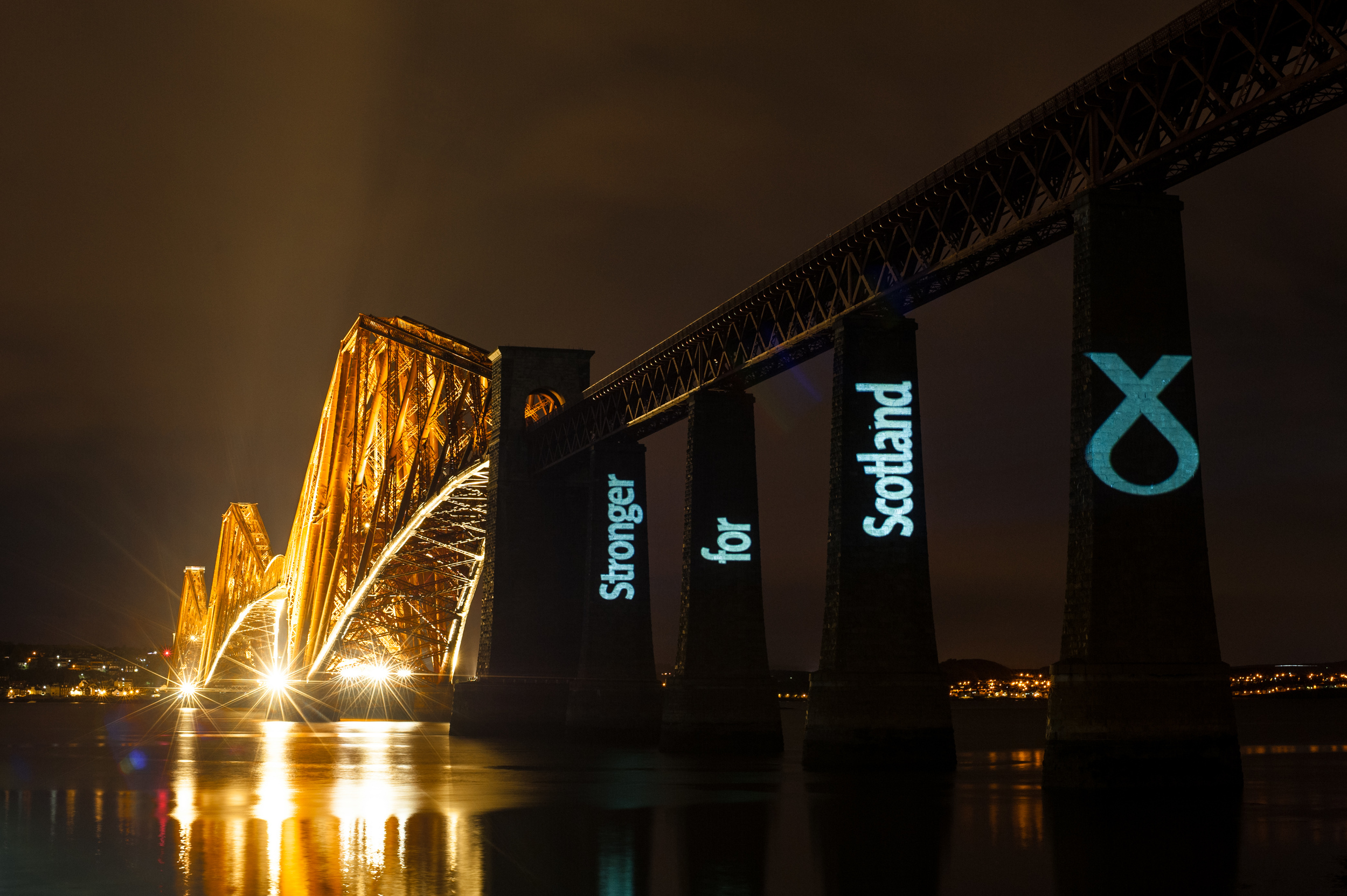
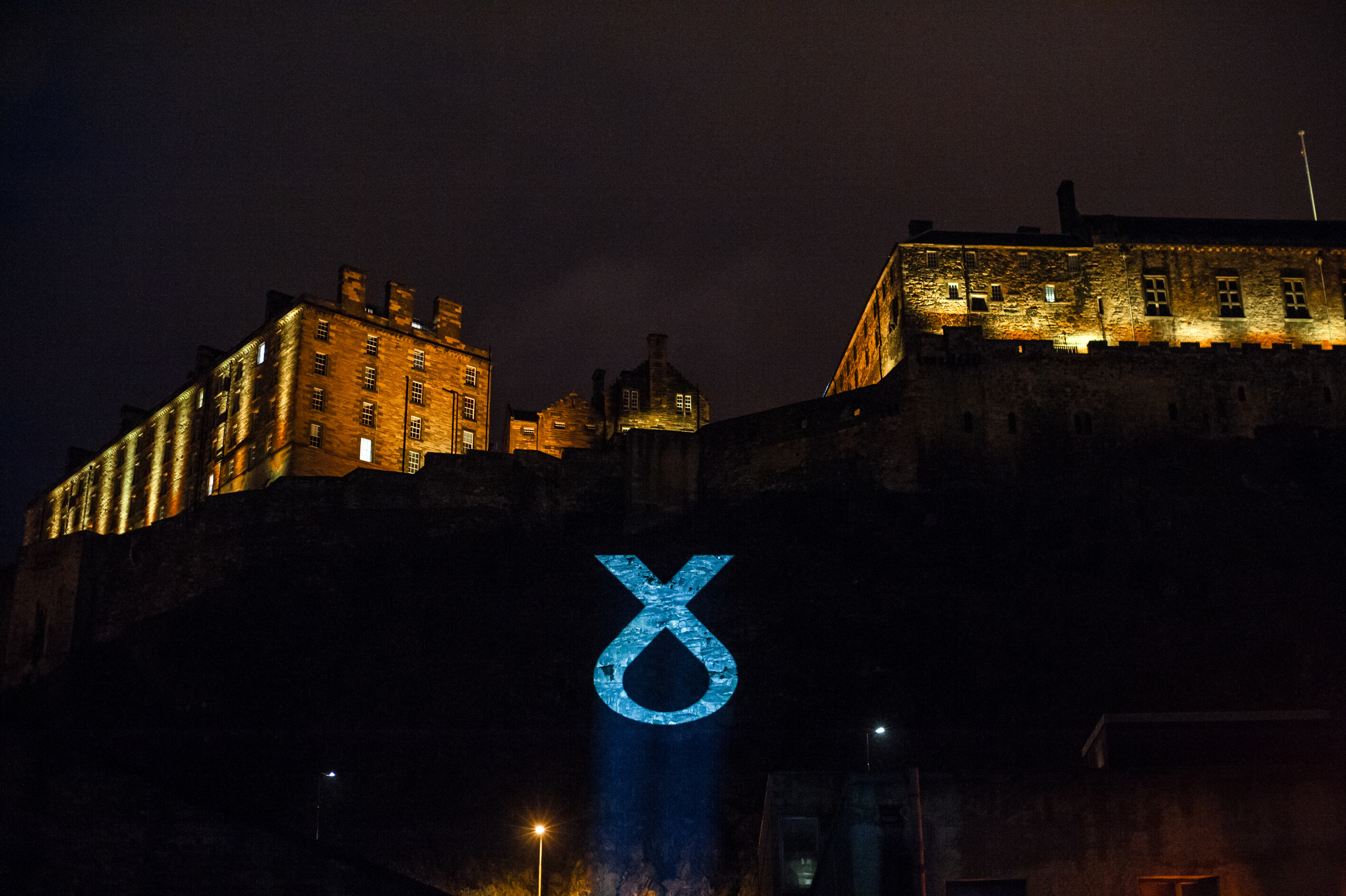

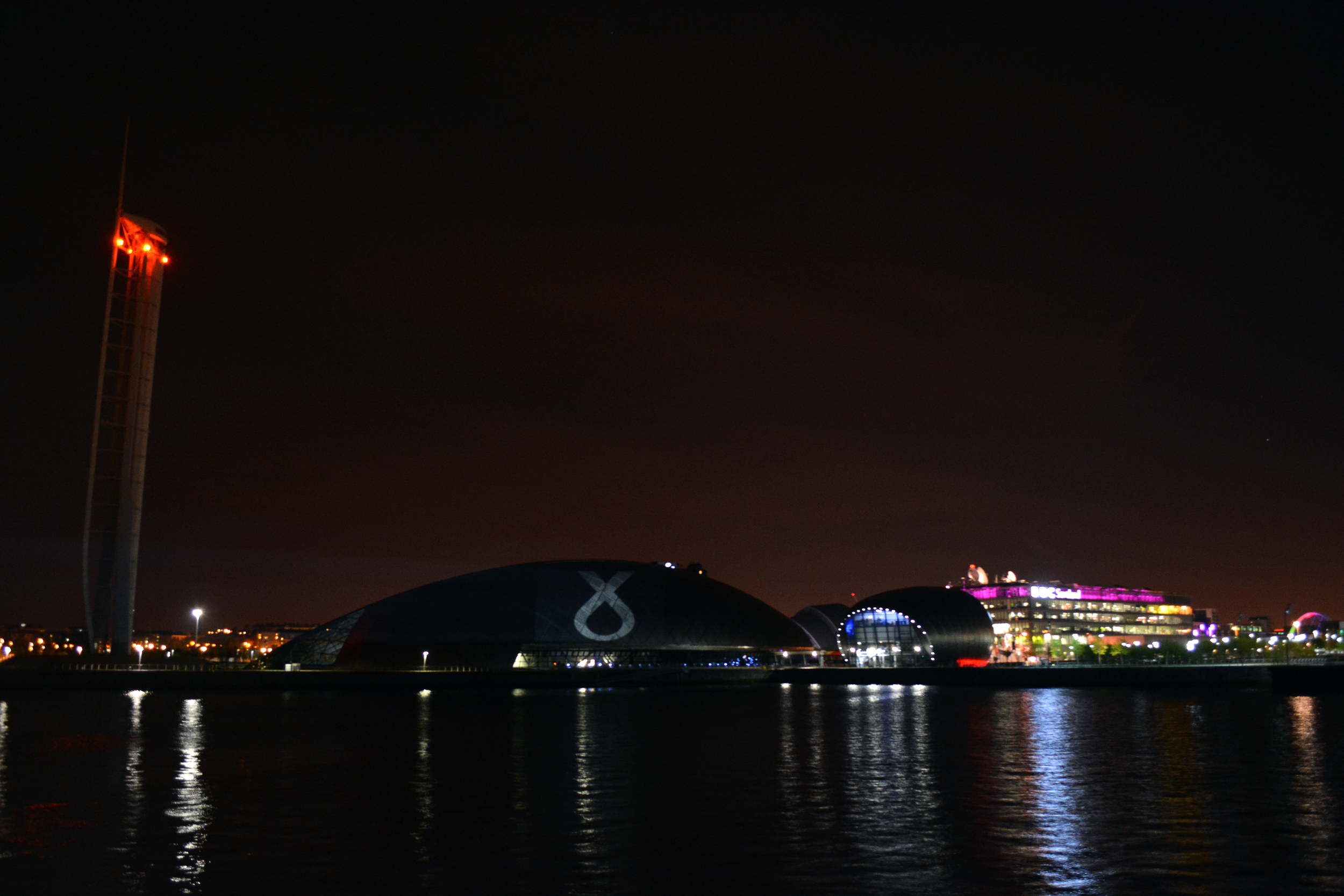

The SNP have won a historic landslide victory in General Election 2015 by winning 56 out of a potential 59 seats; an absolute majority and 50 seat gain. A result which broke the BBC's swingometer.


Working for a political party means that you're never really off duty. Moments after the potentially damaging #FrenchGate story broke last night, Sean McGivern and I started to create this rebuttal, whilst on a night out in a pub in Leith. Assisted by tweets by journalists that had contacted the French Consul, it was read by over 62,000 people within 8 hours. The story was completely discredited by this morning and hunt for the person who had leaked the story has begun.

The SNP has reached over 100,000 members, making it the third largest political party in the UK. This is an increase of over 80,000 in under 6 months. 1/50 people living in Scotland are now members.
A Valentines Day message from the SNP.


National Collective has been awarded second place in The List magazine's 'The Hot 100 2014', a collection of figures who've contributed to the cultural landscape of Scotland during the year.
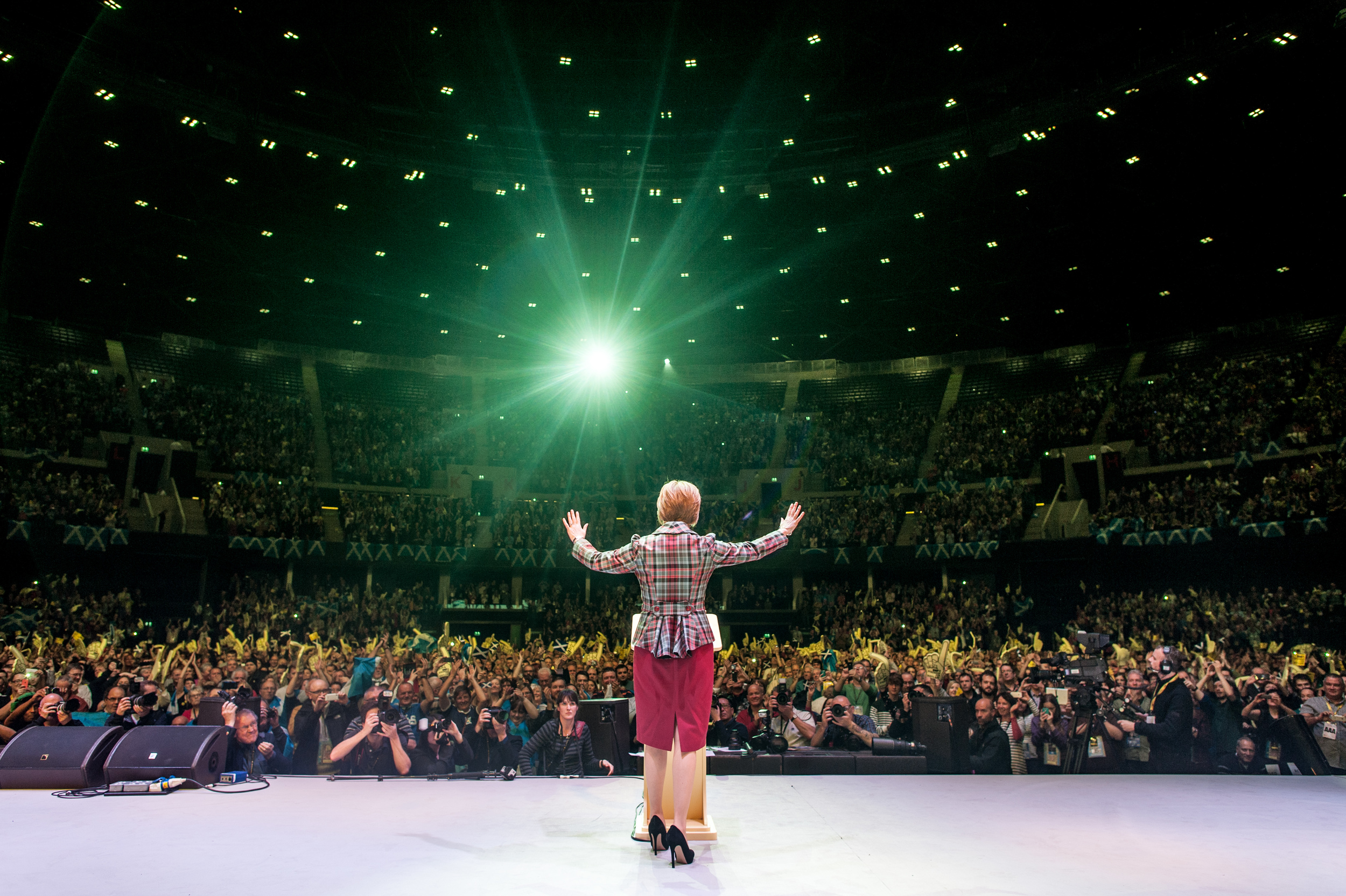
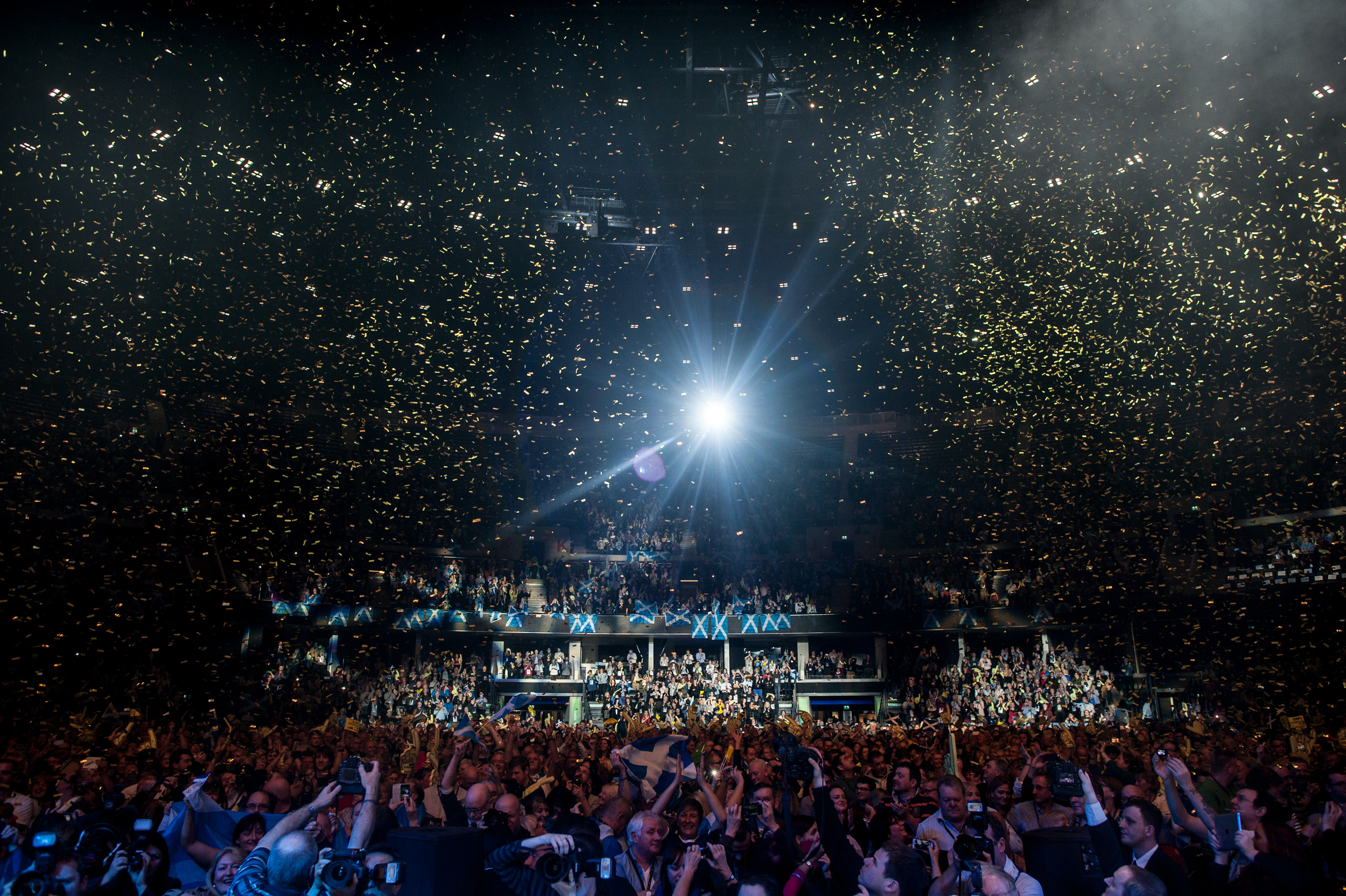
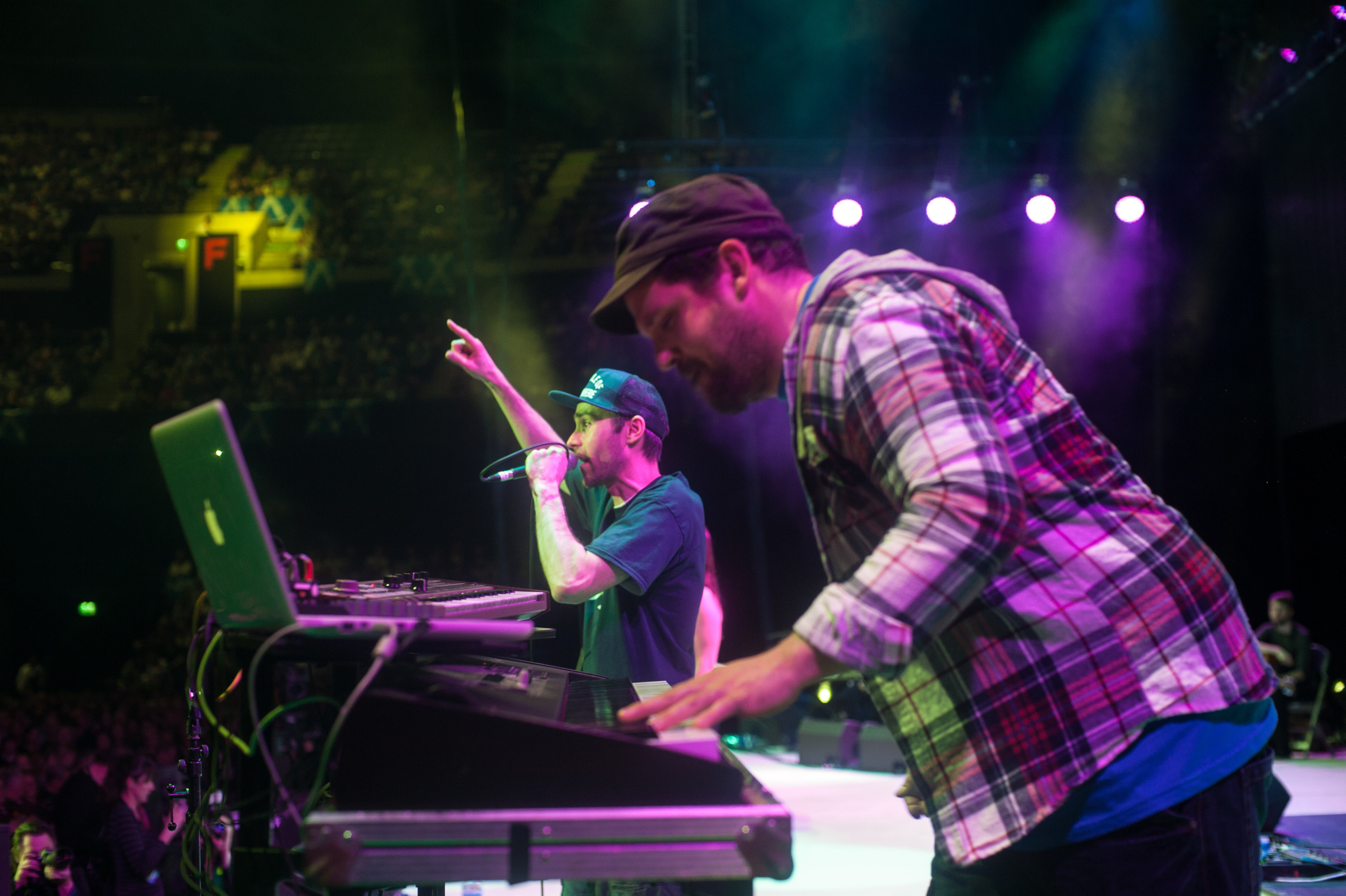

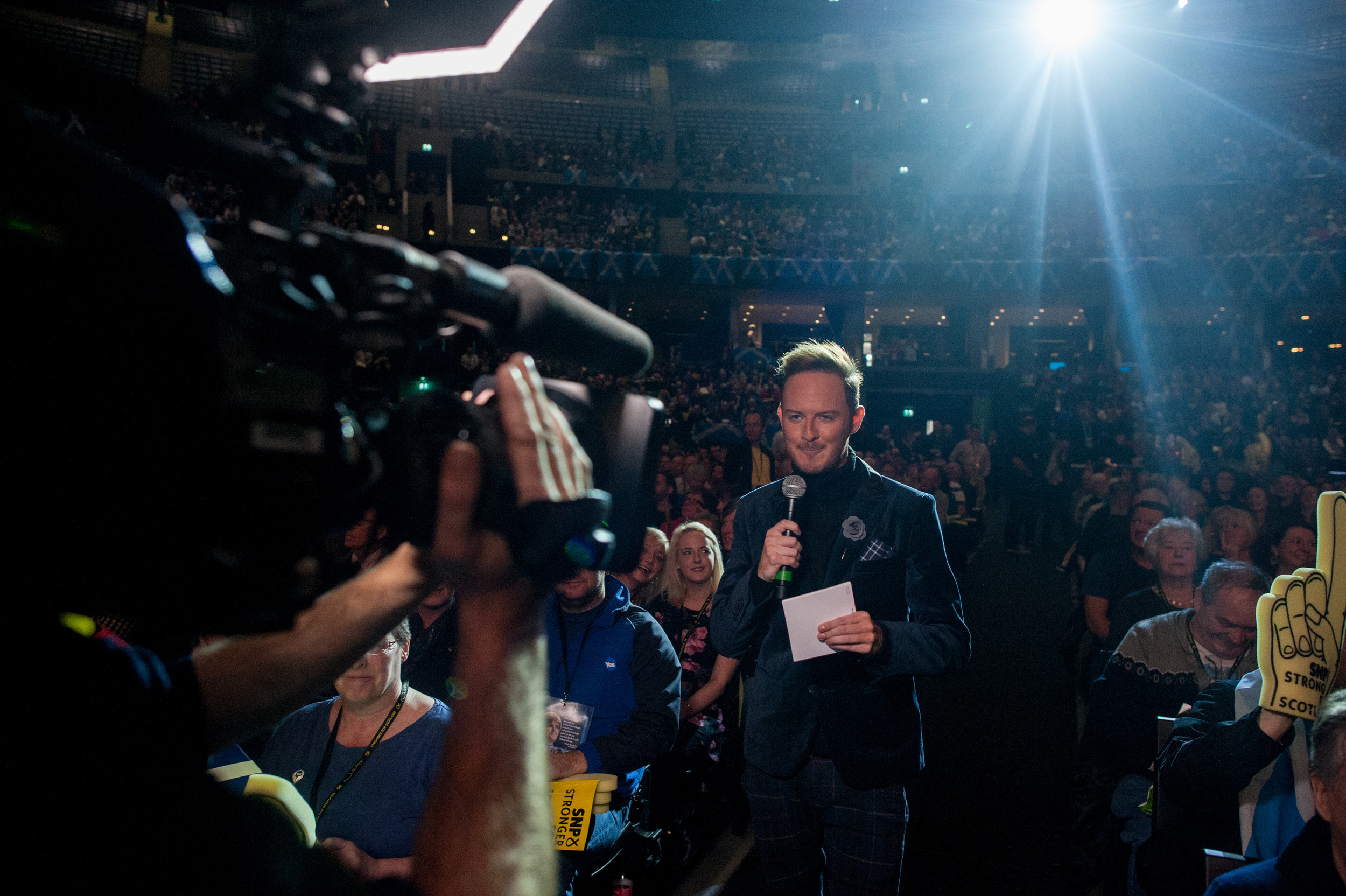

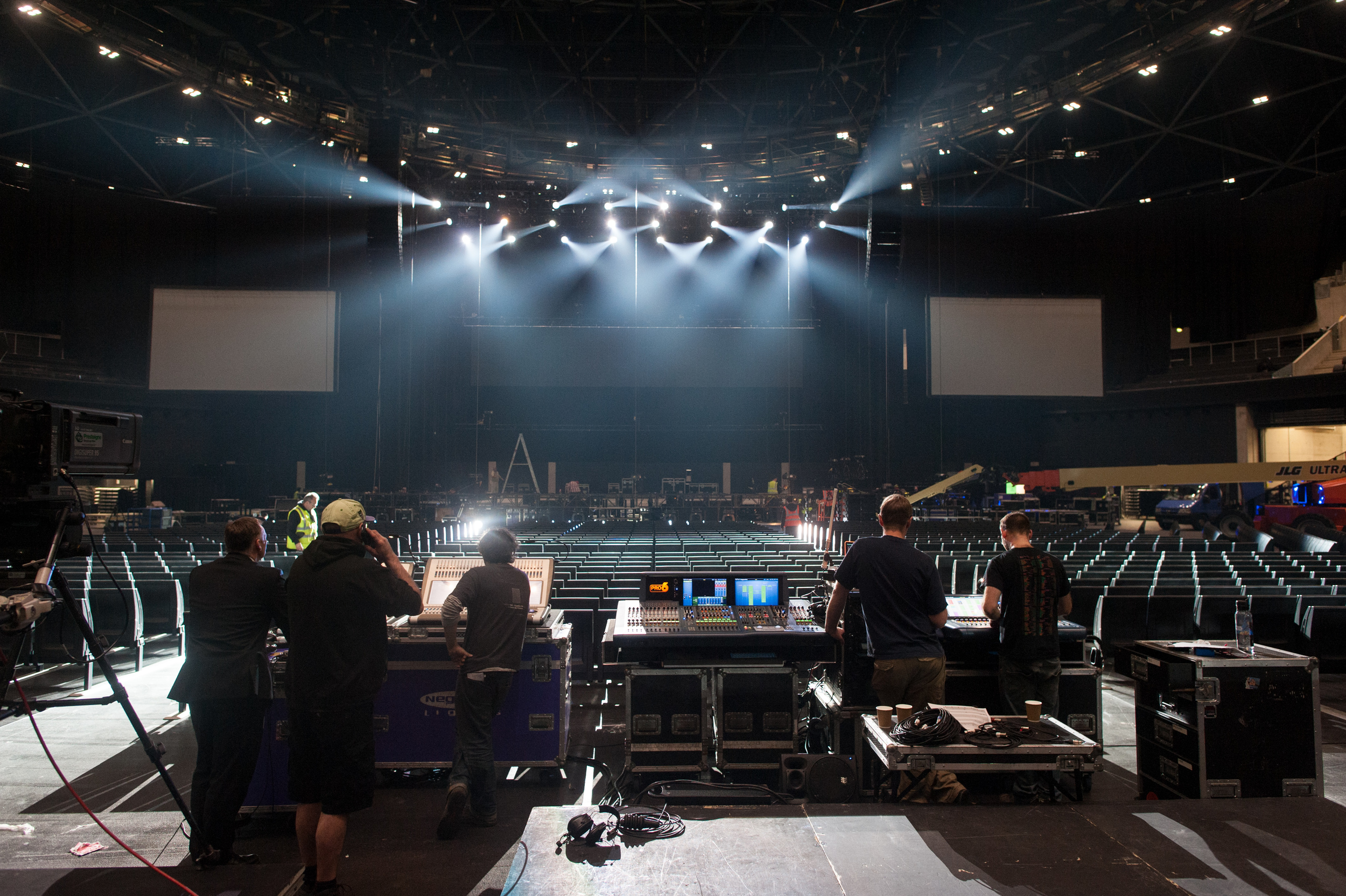
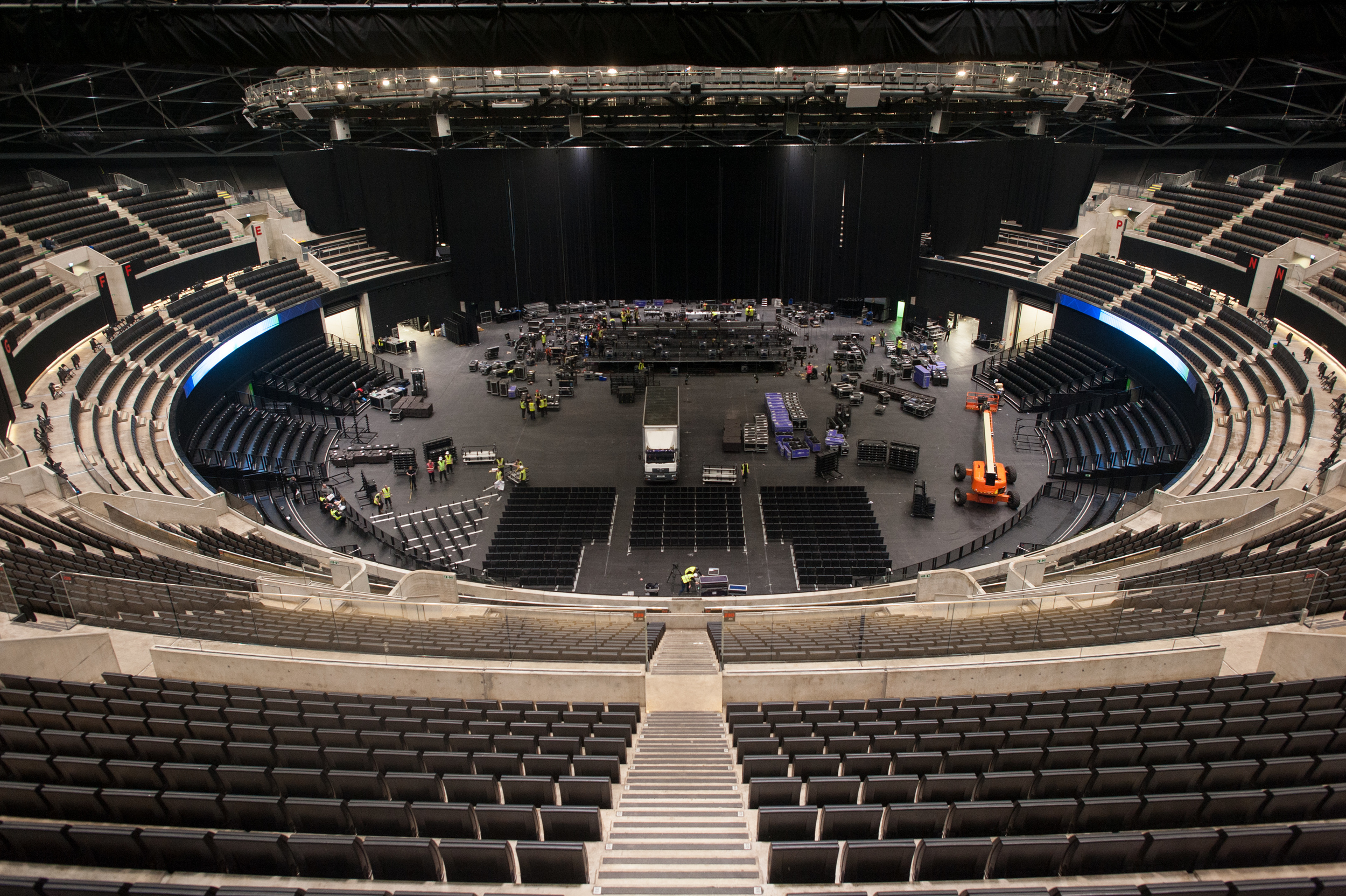


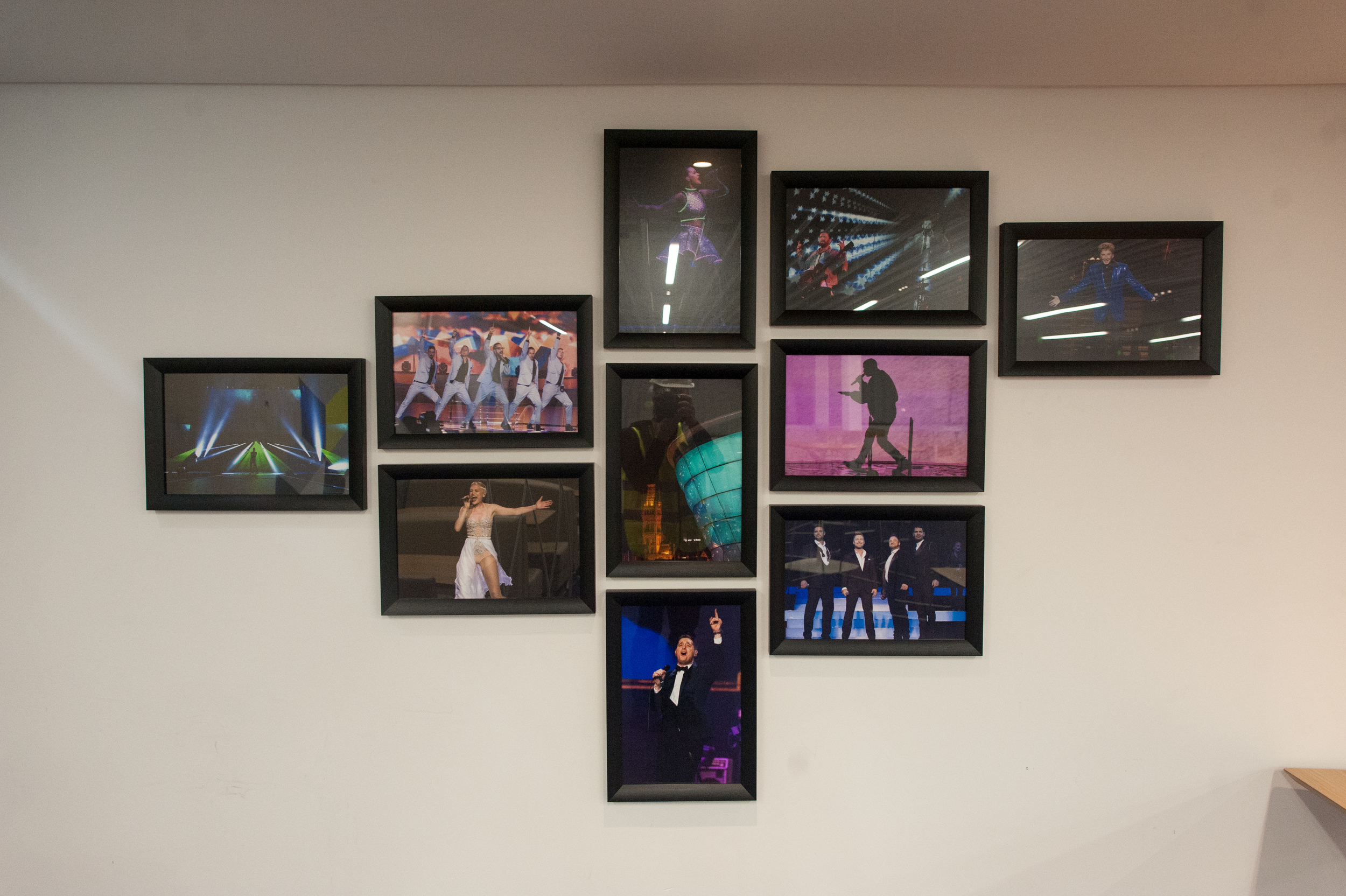
Scotland's new First Minister Nicola Sturgeon followed in the footsteps of pop stars Kylie Minogue and Lady Gaga by appearing in front of 12,000 people at Glasgow's Hydro arena in a rally that sold out quicker than Beyonce. In what was the largest indoor political event in British history, Nicola said it was "an amazing end to a momentous week" in which she had become Scotland's first female leader.

We know that you are completely exhausted and utterly heartbroken. We are too. On face value we lost, but there is more to the result than meets the eye and this was anything but a fair fight. Two years ago, we started off with Yes on a poll of 25% and yet we ended up with 45%. The sheer resilience of the Yes movement in the face of the full might of the British state, corporate and media power, that was designed to demonise, smear and alienate anyone who chose to side with it will not die down. We’ve been looking straight into the eyes of the British establishment, and we don’t think much of what we see sneering back at us.
From the very beginning, the then ‘Better Together’ turned ‘UKOK’ turned ‘No Thanks’ campaign threw every toy out of the basket, played every dirty trick in the book, and ran a campaign based on negativity and scaring the population into thinking that we were not actually capable of running our own affairs. What we were faced with was a campaign based on stifling engagement, dumbing down politics and deadening thought whilst portraying a No vote as the rational, educated and realistic option.
One of the most heartbreaking moments in the campaign will be a familiar one for many. Knocking on doors and being confronted with an elderly person who had postal-voted No because they were told that they would lose their pension. The No campaign had shamelessly managed to convince people that, in the 14th richest country in the world, we could not afford pensions. The fear tactics employed were sickening. They threw everything under the sun at us, but not once did it dampen our spirits. We canvassed, we danced, we wrote, we sang, we campaigned. And we will continue to do so.
Aside from the fear tactics, this was a campaign aspiring to deaden thought, simplify politics and close minds. #PatronsingBTLady proved an excellent illustration of such, as was the ‘I love my family, I’m saying No Thanks’ billboards, and let’s not forget the ‘independence stresses me out’ stress balls handed out at freshers fayres. This is how they see us. They think we are passive, disinterested, selfish and stupid. In contrast, National Collective toured the country on Yestival, Radical Independence knocked on tens of thousands of doors in a day on their Mass Canvasses, tens of thousands of activists reached out to apathetic communities through local groups, Generation Yes ran open platforms on social media where young people could ask us anything – the entire Yes movement was about encouraging people to think and imagine.
Despite the ‘Better Together’ campaign being what is unquestionably one of the most incompetent political campaigns in the history of British politics, what hindered the steady surge to Yes was a largely compliant mainstream media. For example, a Guardian journalist sent us sarcastic e-mails refusing to publish details of a list of 1,300 prominent artists and creatives who had signed a letter backing a Yes vote and we were constantly demonized as anti-English separatist nationalists and, at times, ‘fascists’ despite many of us being English, and some of us knowing the journalists personally. If they cannot win through an honest factual campaign, what does this say about their case?
Aside from the blatant smearing of anything Yes, sections of the press did something significantly more sinister. They controlled the dissemination of information, closed the space for Yes voices to be heard, and thus facilitated and legitimised the scaremongering onslaught from the No campaign. How many times did you hear that ‘there are just too many unanswered questions’, despite the questions being answered? How many times did you hear that people were voting No because they didn’t like nationalism, despite us not being nationalists? To suggest that British identity is in no way nationalistic derives from a neo imperialist mindset. How many times did you see Alistair Darling and Alex Salmond compared to Dennis Canavan? How many people do you honestly think were aware that Salmond wasn’t the leader of Yes? This was most evident during the last week of the campaign, when we saw the Telegraph stating that voting Yes was an insult to dead soldiers and their families. The establishment’s compliant media was the cherry on top of the cake; a systematic abuse of power.
Did we let this deliberate misrepresentation and demonisation take us down? No. We became the media. Stephen Paton released his #IndyRef Weekly Review, websites like National Collective and Bella Caledonia became a space for underrepresented Yes voices to be heard, and we took to social media to overcome the smear and spread our progressive visions. We should point out here that the Sunday Herald, in supporting Yes, demonstrated courage throughout this movement. It’s not easy to go against the tide of mainstream media opinions and portrayals. The Yes movement should be incredibly proud of our ingenuity and tireless determination and we mustn’t let it dwindle.
Within the political landscape of the No campaign, Scottish Labour provided the front whilst the Tories pulled the strings and supplied the funds. If they were honest democrats, Scottish Labour should have held an election within their party regarding which stance to take on the referendum. The Scottish Green Party for example voted on it, and maintained that members who supported No could speak freely on the matter. This was the first indication that Scottish Labour were about to ostracise those demonstrating autonomy in their party. And boy did that happen. They were openly seen and heard mocking Yes supporting Labour members at their party conference. Something tells us that they may regret these tactics in the near future.
Despite Scottish Labour supporting a No vote, around 38% of their voters supported Yes. The Scottish Labour Party ignored their own supporters, and instead blindly persued an agenda that panders to the Labour Party in Westminster, a party that is out of touch with the people of Scotland and one that they have overwhelmingly rejected. One of the results of this is that we are now witnessing memberships of the SNP, the Scottish Green Party and the Scottish Socialist Party skyrocket overnight. Scottish Labour have risked alienating 38% of their own vote in Scotland to preserve a failing Westminster elite. This highlights how little regard they have for the Scottish political landscape. True power, they believe, lies at Westminster.
Taking all of this into consideration, and acknowledging that we were challenging the full force of the British establishment, their corporate might and their compliant media, we did bloody well. If we were at the forefront of a campaign with that level of influence, power and money, we would see a 55% as an international embarrassment.
Part of the reason that we saw the groundswell of grassroots activism that we did is because there was a deadline, a common shared goal for September 18th 2014. Although the deadline has been removed, we still have that shared aspiration. The question now is how to we encapsulate and maintain the momentum of this progressive, diverse, grassroots movement?
The first means of achieving this is clear. The vast majority of the mainstream media have demonstrated their complete lack of autonomy and level of compliance to the British establishment and the corporate elite. We need to create and preserve alternative media channels. But there is little point in creating them as a protest to the mainstream media. These alternative channels must become the mainstream. To do so requires working together. There are some utterly brilliant and resourceful people in this movement. It’s time to unite.
Secondly, we need to organise ourselves with the common aim of holding Westminster accountable to the promises that they made to us. This starts with their pledges for further devolution. We expect that this won’t happen. 1 in every 4 No voters casted their vote under the promise of further devolution. If these promises fail to transpire, we will seek to secure a date for the next referendum on Scottish independence. We have various options as to how we can help make this happen, and we will update you on this later should it be required.
Thirdly, as stated above, the Yes movement seeks to make people think. It is our duty to continue to create a politically engaged, educated electorate. What Westminster want is a Yes movement that is so utterly deflated that it regresses into the shadows, it stops dreaming, it stops imagining that another Scotland is truly possible. There is a reason why the likes of Rupert Murdoch expressed concern at the influence of progressive Yes groups in Scotland.
We simply cannot afford to let our beautiful movement regress. 1.6 million of us stood up and dared to dream. We lost by the equivalent of the population of a small city. We can win this, we must win this, we will win this. When you get a popular revolution driven by hope and optimism like this, that energy will not dissolve into nothing. It can only grow. In the aftermath of a normal election, the losing party is disheartened and their supporters deflated. The difference here is that the whilst the official No campaign has finished and will no doubt try to delete all evidence of it ever existing, people still make the Yes movement and we will continue to campaign and dream. We will always put hope over fear.
Keep imagining a better Scotland.
Ross Colquhoun and Miriam Brett
--
Photograph by Peter McNally

This essay was first published in the Sunday Herald and is inspired by and dedicated to the utterly brilliant and tireless campaigners who I have met and worked with since launching National Collective from a laptop in my bedroom over two and a half years ago.
When I first considered getting involved in the Yes movement, I’d originally intended to design some posters.
I did, but alongside two friends, I also ended up kick-starting a movement of over 3000 of artists, writers and activists. The movement has generated hundreds of articles, events, two festivals, a landmark publication and local groups across Scotland. To say the results have exceeded my initial expectations would be a massive understatement. It’s been an utterly inspiring collective effort.
My journey to Yes wasn’t that unusual. The vast majority of my family were traditional Labour voters. Yet like so many in Scotland, Labour’s steady shift to the right, teamed with the unimaginable horrors of the Iraq invasion, created a loss of faith in their party that was now unrecognisable.
The demise of the traditional Labour Party party shook up and remoulded the political landscape across the UK, but this was felt with particular strength in Scotland. The notion of a traditional Labour voter crumbled, replaced instead with entrenched apathy and disillusionment. Scotland stopped being a country that belonged to one party, even though we remain stubbornly attached to what many still see as “Labour values”.
For my family, like so many others who supported Labour for generations, their disillusionment with what the party has become has moved them, at last, towards support for an independent Scotland.
It was this disillusionment with the narrow, professionalised, Westminster political system that led to the creation of National Collective. But it was also about wanting to do politics differently and on that front we’ve succeeded.
I believe that creative practitioners benefit immensely, like other workers, from a society that is more equal. The UK is the fourth most unequal country in the world. Aside from the direct cultural damage inflicted by cuts and austerity to the arts, most artists live precarious economic lives. Therefore constantly spiralling living costs radically affect the ability of individuals, especially the young, to participate in culture. No Westminster political party is offering an alternative on this.
Images have always played an important role in shaping our identity, our culture and our perspective on history. And it is our belief that art and creativity has an immeasurable power to influence people, to dispel political apathy, to inspire ideas and to motivate change.
As a result of this campaign Scotland has already changed.
People from all walks of life have realised, many for the first time, that we are a young, vibrant nation, ready to meet the future head-on, with our minds, our hands and our creativity. The flowering of ideas and the convening of artists around the idea of independence during this debate demonstrates that Scotland has been energised as result of its position at such a unique juncture.
Whatever the result next Thursday, we really have risen to the occasion.
Yestival, for example, was a colourful, exciting and at times unpredictable national tour. We worked with local communities, made use of local spaces creatively, took over village halls, created pop-up exhibitions, invited local speakers and performers to contribute as well as presenting a touring band of National Collective performers.
We were genuinely taken aback by the positive response it received from the Scottish Borders to Shetland.
Scotland’s Referendum debate has brought an unprecedented level of public engagement with politics through the revival of town-hall meetings and through cultural events across Scotland.
Grass-roots social media activism has countered the tactics of the No campaign and the mainstream media by utilising facts, creativity, wit and humour. Politics has become fun again and a Yes vote would let us nurture and channel this energy into nation-building events like the creation of a constitution.
This year we have a question that will define our generation. We can be the Scotland that chose to grasp the chance to create a better society, or the Scotland that put fear before hope.
In a wide range of fields, from literature to the applied arts, our nation is world-leading. But this isn’t about claiming to be better than any other country; it is claiming equality. The past achievements of Scottish intellect, creativity, and ingenuity are an exceptionally precious resource.
At its best, our creativity has been unbounded in its vision and ambition. All of the energy, thought, imagination and graft that has been poured into this campaign will not go away. It will inform the future that we choose to build.
In contrast, the No campaign backed by big money has failed to adapt to the new media landscape, treating those who campaign creatively and online with disdain, and the electorate as if they were a focus group.
In no uncertain terms, a Yes vote would be a victory for the Yes movement in the face of the full UK state, corporate and media might. It would be a victory for the network generation against the antiquated hierarchy of the British state. It would be a victory against all of the odds and one that would reverberate across the planet and throughout history. But most importantly, it would be a victory for democracy and the will of the people of Scotland in deciding their own future.
The opportunity to create a new state is perhaps the ultimate challenge that a society can grapple with. It is also a fundamentally creative one. It is the task of artists to inhabit the vanguard of imagining and questioning the future of a society.
After Thursday’s vote, we must do all that we can to maintain the spirit of exploration and rediscovery that has defined this campaign. Whatever the result, it will be needed, and whatever problems we face, we need to solve them with all our creative, collective ability.
Perhaps the most important thing about National Collective is that is was never supposed to happen. It really has been a spontaneous, unplanned adventure.
I never expected to have opportunity to work with so many brilliant and talented people in support of this campaign. Like so many other parts of our movement our power is decentralised and self-generating.
It’s not about policies, committees or ideas: it’s about being active, engaged and educated. Other than helping to win a Yes vote, I hope that this pro-active attitude, that inspires ordinary people to do remarkable things, will form our legacy.
Scottish independence is a fork in the road, it’s about who we are and the society we want to be.
For the first time in our lives, as you step into the polling booth on Thursday, our future really is in your hands. This is, indeed, a once-in-a- lifetime opportunity for all of us to build a better nation.
So, Scotland, what kind society do you want to be part of?
Ross Colquhoun
--
Photograph by Robb Mcrae
During Scotland's Referendum only political parties were entitled to broadcast airtime. National Collective created this alternative broadcast and shared it online. The animation was optimised for mobile phones.